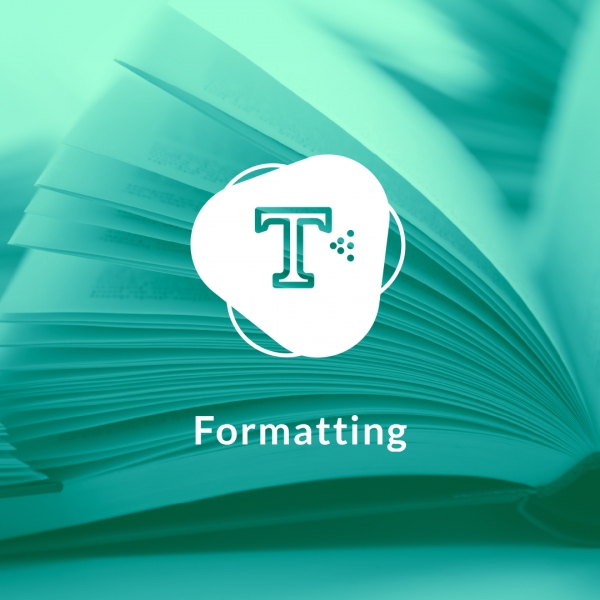If you’ve ever dreamt of seeing the title “Best-Selling Author” followed by your name, you’re probably familiar with the traditional publishing route: literary agents, endless submissions, rejection letters (cue sad violin music), and waiting for that elusive book deal. But let’s get real—the publishing industry has changed, and so have the financial benefits of self-publishing and being an author.
In today’s world, self-publishing isn’t just an option; it’s a financial goldmine for authors who are willing to embrace their entrepreneurial spirit. A self-published book allows authors to retain full control over their work, including distribution and marketing. Whether you’re tired of playing by traditional publishers’ rules or just like the idea of keeping more of your hard-earned money, self-publishing offers a unique path to financial success. Let’s dive into the specifics of why leaving traditional publishing behind could be one of the best business decisions you make as an author.
Traditional Publishing: The Hidden Costs That Drain Your Wallet
Let’s start with the bad news: traditional publishing isn’t exactly the golden ticket it’s made out to be. Sure, you get the prestige of being published by a well-known publishing house, but at what cost? Let me paint a picture for you.
Your Publishing Journey Awaits – Start NowFirst, you need an agent to even be considered by the big publishers. Literary agents typically take 15% of your earnings—before you’ve even made a dime from your book. And then there’s the royalty split. While it might sound like a sweet deal to get, say, 10% of the sale price of every book sold, when you do the math (and we know you’re an author, not a math major), that means you’re earning pennies on each sale while your publisher takes home the bulk of the profits.
Still not convinced? Let’s talk about control—or rather, the lack of it. With traditional publishing, you hand over control of the cover design, pricing, and even some creative elements of your book to the publisher. Sure, they’ve got experts, but wouldn’t it be nice to have a say in how your book looks and feels?
And then there’s the waiting—oh, the waiting. Traditional publishing moves at the speed of a slow-motion scene in a bad soap opera. The timeline of finding an agent, signing a deal, and finally seeing your book on shelves could take years. All the while, you could be building your fan base and earning money through self-publishing. But we’ll get to that.
What is Self Publishing?
Self-publishing is the process of publishing a book or other written work independently, without the involvement of a traditional publisher. This means that the author is responsible for all aspects of the publishing process, including editing, formatting, cover design, and distribution. Self-publishing allows the author to retain complete creative control and ownership of their work. It allows authors to publish their work directly to readers, without the need for a traditional publishing house or literary agent.
Brief History of Self-Publishing
Self-publishing is a method that has been used for centuries, but it has gained significant traction in recent years with the rise of digital platforms and online marketplaces. In the past, self-publishing was often seen as a last resort for authors who couldn’t secure a traditional publishing deal. However, with the advent of e-books, print-on-demand technology, and social media, self-publishing has become a viable and attractive option for many authors.
Self-Publishing: A Pathway to Financial Freedom
Now for the good news: self-publishing is like taking a direct flight while traditional publishing makes you endure every layover imaginable. Instead of waiting for an agent or publisher to give you the green light, you are in charge of your publishing destiny—and more importantly, your finances.
One of the biggest financial benefits of self-publishing is the control you have over pricing and royalties. Take Amazon’s Kindle Direct Publishing (KDP), for example. Self-published authors can earn up to 70% in royalties on ebook sales. Compare that to the 10–15% from traditional publishing, and it’s not hard to see why so many authors are choosing to self-publish.
Self-published books have seen notable success stories, such as E.L. James and Hugh Howey, who have leveraged this route to achieve significant earnings and recognition.
But it’s not just about royalties. Self-publishing also means you can set the price for your book. You can adjust it for sales, run promotions, or even release it for free to build an audience—strategies that are nearly impossible with traditional publishing.
And let’s not forget the speed of self-publishing. Gone are the days of waiting months or even years to see your book in print. With platforms like KDP, you could have your book live and ready for sale in less than 24 hours. The path to financial freedom has never been faster.
Full Creative Control: The Key to Maximizing Profits
Imagine walking into a bookstore and seeing a poorly designed cover on your book. If you went the traditional publishing route, that’s a reality you may face. But with self-publishing, the power is in your hands.
One of the most appealing aspects of self-publishing is the complete creative control you have over your project. From the cover design to the formatting, you get to make the decisions. This is important because the creative choices you make directly affect how your book sells.
Your Publishing Journey Awaits – Start NowA well-designed cover and engaging formatting can attract more readers, leading to more sales—and more money in your pocket. And the best part? You can tweak these elements whenever you want, based on reader feedback or market trends. That’s something traditional publishers rarely allow.
Creative control extends beyond aesthetics. When you self-publish, you’re also in control of how your book is marketed. You know your audience better than anyone, so why not take the reins and promote your book in a way that resonates with readers? Whether you’re using social media, email campaigns, or targeted ads, having control over your marketing efforts means you keep more of the profits from each sale.
Keeping Royalties: The Financial Edge of Self-Publishing
Speaking of profits, let’s get into the nitty-gritty of royalties. Traditionally published authors typically receive only 10–15% of the profits per book sold, which means if your book is priced at $10, you’re earning about $1 per sale—before your agent takes their cut. This limited control over profits is a significant drawback.
In contrast, self-published authors can retain up to 70% of their royalties. Yes, you read that right. On platforms like Amazon’s KDP and Spines, that same $10 book could earn you around $7 per sale. That’s a huge difference, especially when you start selling in volume.
It’s no wonder that self-publishing has created a new wave of millionaire authors. When you keep the majority of your profits, it’s easier to see financial success, even if you’re not selling millions of copies. Self-published authors also have the flexibility to explore additional income streams like audiobooks, special editions, and merchandise—all of which can be created and marketed directly to your audience.
Lower Costs, Faster Returns
Here’s another financial perk of self-publishing: it doesn’t have to break the bank. Self-published books come with upfront costs such as hiring freelance editors or designers, but these costs are often minimal compared to the fees of traditional publishers. Additionally, self-published authors have the potential for significant long-term earnings, as they can leverage higher royalty rates and personal skills for profit.
The ability to self-publish quickly also means you start earning money sooner. Traditional publishing might lock your manuscript up in production limbo, but with self-publishing, you control the timeline. Faster publication means faster sales—and faster returns on your investment.
Challenges of Self-Publishing
While self-publishing offers many benefits, it also comes with its own set of challenges. One of the biggest challenges is the financial investment required to produce a high-quality book.
Investment and Budgeting
Self-publishing requires authors to invest time and money in editing, formatting, cover design, and marketing. This can be a significant upfront cost, but it can also pay off in the long run if the book is successful. Authors need to budget carefully and plan their expenses to ensure that they can produce a professional-looking book that will appeal to readers.
It’s worth noting that self-publishing platforms like Amazon’s Kindle Direct Publishing (KDP) and Smashwords offer various tools and services to help authors publish their work, but these services often come with a fee. Authors need to weigh the costs and benefits of using these services and decide what works best for their budget and goals.
In addition to the financial investment, self-publishing also requires authors to take on the responsibility of marketing and promoting their work. This can be a time-consuming and labor-intensive process, but it’s essential for reaching readers and generating sales.
Overall, self-publishing offers many benefits, including complete creative control, higher royalty rates, and faster time-to-market. However, it also requires authors to be proactive and take on the responsibilities of publishing, including investment and budgeting.
Take Charge of Your Marketing—and Your Profits
In traditional publishing, marketing efforts often feel like a mystery. You have little control over how your book is promoted, and unless you’re a best-selling author, the marketing budget allocated to you is minimal.
Self-published authors, however, have full control over how their book is marketed. You can use social media to build a loyal audience, launch email campaigns to attract readers, or run targeted ads. Plus, you can adjust your strategy at any time based on what works best. When you control your marketing strategy, you also take charge of your profits.
The Financial Benefits of Self-Publishing Are Clear
Self-publishing offers authors a level of financial freedom that traditional publishing simply can’t match. By keeping more of your royalties, maintaining full creative control, and eliminating the long wait times of traditional publishers, you can enjoy faster returns and greater profits.
If you’re ready to take control of your publishing journey, now is the time. Spines makes it easier than ever to self-publish your book while keeping the majority of your earnings. With Spines, you get access to professional services, global distribution, and a user-friendly platform designed to put you in charge. Discover how much you can earn as a self-published author. Sign up for free today and start your journey to financial freedom!
Your Publishing Journey Awaits – Start Now







